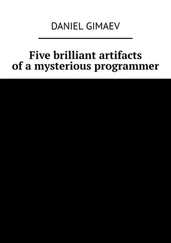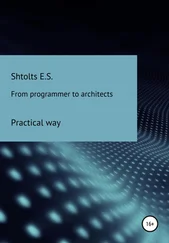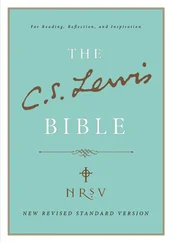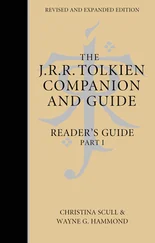Standard Template Library Programmer's Guide
Здесь есть возможность читать онлайн «Standard Template Library Programmer's Guide» весь текст электронной книги совершенно бесплатно (целиком полную версию без сокращений). В некоторых случаях можно слушать аудио, скачать через торрент в формате fb2 и присутствует краткое содержание. Жанр: Программирование, Справочники, на английском языке. Описание произведения, (предисловие) а так же отзывы посетителей доступны на портале библиотеки ЛибКат.
- Название:Standard Template Library Programmer's Guide
- Автор:
- Жанр:
- Год:неизвестен
- ISBN:нет данных
- Рейтинг книги:4 / 5. Голосов: 1
-
Избранное:Добавить в избранное
- Отзывы:
-
Ваша оценка:
- 80
- 1
- 2
- 3
- 4
- 5
Standard Template Library Programmer's Guide: краткое содержание, описание и аннотация
Предлагаем к чтению аннотацию, описание, краткое содержание или предисловие (зависит от того, что написал сам автор книги «Standard Template Library Programmer's Guide»). Если вы не нашли необходимую информацию о книге — напишите в комментариях, мы постараемся отыскать её.
Standard Template Library Programmer's Guide — читать онлайн бесплатно полную книгу (весь текст) целиком
Ниже представлен текст книги, разбитый по страницам. Система сохранения места последней прочитанной страницы, позволяет с удобством читать онлайн бесплатно книгу «Standard Template Library Programmer's Guide», без необходимости каждый раз заново искать на чём Вы остановились. Поставьте закладку, и сможете в любой момент перейти на страницу, на которой закончили чтение.
Интервал:
Закладка:
Can you characterize the discussions and debate in the committee following the proposal? Was there immediate support? Opposition?
We did not believe that anything would come out of it. I gave a talk, which was very well received. There were a lot of objections, most of which took this form: this is a huge proposal, it's way too late, a resolution had been passed at the previous meeting not to accept any major proposals, and here is this enormous thing, the largest proposal ever, with a lot of totally new things. The vote was taken, and, interestingly enough, an overwhelming majority voted to review the proposal at the next meeting and put it to a vote at the next meeting in Waterloo, Ontario.
Bjarne Stroustrup became a strong supporter of STL. A lot of people helped with suggestions, modifications, and revisions. Bjarne came here for a week to work with us. Andy helped constantly. C++ is a complex language, so it is not always clear what a given construct means. Almost daily I called Andy or Bjarne to ask whether such-and-such was doable in C++. I should give Andy special credit. He conceived of STL as part of the standard library. Bjarne became the main pusher of STL on the committee. There were other people who were helpful: Mike Vilot, the head of the library group, Nathan Myers of Rogue Wave, Larry Podmolik of Andersen Consulting. There were many others.
The STL as we proposed it in San Diego was written in present C++. We were asked to rewrite it using the new ANSI/ISO language features, some of which are not implemented. There was an enormous demand on Bjarne's and Andy's time trying to verify that we were using these non-implemented features correctly.
People wanted containers independent of the memory model, which was somewhat excessive because the language doesn't include memory models. People wanted the library to provide some mechanism for abstracting memory models. Earlier versions of STL assumed that the size of the container is expressible as an integer of type size_t and that the distance between two iterators is of type ptrdiff_t. And now we were told, why don't you abstract from that? It's a tall order because the language does not abstract from that; C and C++ arrays are not parameterized by these types. We invented a mechanism called "allocator," which encapsulates information about the memory model. That caused grave consequences for every component in the library. You might wonder what memory models have to do with algorithms or the container interfaces. If you cannot use things like size_t, you also cannot use things like T* because of different pointer types (T*, T huge *, etc.). Then you cannot use references because with different memory models you have different reference types. There were tremendous ramifications on the library.
The second major thing was to extend our original set of data structures with associative data structures. That was easier, but coming up with a standard is always hard because we needed something which people would use for years to come for their containers. STL has from the point of view of containers, a very clean dichotomy. It provides two fundamental kinds of container classes: sequences and associative containers. They are like regular memory and content-addressable memory. It has a clean semantics explaining what these containers do.
When I arrived at Waterloo, Bjarne spent a lot of time explaining to me that I shouldn't be concerned, that most likely it was going to fail, but that we did our best, we tried, and we should be brave. The level of expectation was low. We expected major opposition. There was some opposition but it was minor. When the vote was taken in Waterloo, it was totally surprising because it was maybe 80% in favor and 20% against. Everybody expected a battle, everybody expected controversy. There was a battle, but the vote was overwhelming.
What effect does STL have on the class libraries published in the ANSI/ISO February 1994 working paper?
STL was incorporated into the working paper in Waterloo. The STL document is split apart, and put in different places of the library parts of the working paper. Mile Vilot is responsible for doing that. I do not take active part in the editorial activities. I am not a member of the committee but every time an STL-related change is proposed, it is run by me. The committee is very considerate.
Several template changes have been accepted by the committee. Which ones have impact on STL?
Prior to the acceptance of STL there were two changes that were used by the revised STL. One is the ability to have template member functions. STL uses them extensively to allow you to construct any kind of a container from any other kind of a container. There is a single constructor that allows you to construct vectors out of lists or out of other containers. There is a templatized constructor which is templatized on the iterator, so if you give a pair of iterators to a container constructor, the container is constructed out of the elements which are specified by this range. A range is a set of elements specified by a pair of iterators, generalized pointers, or addresses. The second significant new feature used in STL was template arguments which are templates themselves, and that's how allocators, as originally proposed, were done.
Did the requirements of STL influence any of the proposed template changes?
In Valley Forge, Bjarne proposed a significant addition to templates called "partial specialization," which would allow many of the algorithms and classes to be much more efficient and which would address a problem of code size. I worked with Bjarne on the proposal and it was driven by the need of making STL even more efficient. Let me explain what partial specialization is. At present you can have a template function parameterized by class T called swap(T&, T&) and swaps them. This is the most generic possible swap. If you want to specialize swap and do something different for a particular type, you can have a function swap(int&, int&), and which does integer swapping in some different way. However it was not possible to have an intermediate partial specialization, that is, to provide a template function of the following form:
template
void swap(vector&, vector&);
This form provides a special way to swap vectors. This is an important problem from an efficiency point of view. If you swap vectors with the most generic swap, which uses three assignments, vectors are copied three times, which takes linear time. However, if we have this partial specialization of swap for vectors that swap two vectors, then you can have a fast, constant time operation, that moves a couple of pointers in the vector headers. That would allow sort, for example, to work on vectors of vectors much faster. With the present STL, without partial specialization, the only way to make it work faster is for any particular kind of vector, such as vector, to define its own swap, which can be done but which puts a burden on the programmer. In very many cases, partial specialization would allow algorithms to be more effective on some generic classes. You can have the most generic swap, a less generic swap, an even less generic swap, and a totally specific swap. You can do partial specialization, and the compiler will find the closest match. Another example is copy. At present the copy algorithm just goes through a sequence of elements defined by iterators and copies them one by one. However, with partial specialization we can define a template function:
template
T** copy(T**,T**,T**);
This will efficiently copy a range of pointers by using memcpy, because when we're copying pointers we don't have to worry about construction and destruction and we can just move bits with memcpy. That can be done once and for all in the library and the user doesn't need to be concerned. We can have particular specializations of algorithms for some of the types. That was a very important change, and as far as I know it was favorably received in Valley Forge and will be part of the Standard.
Читать дальшеИнтервал:
Закладка:
Похожие книги на «Standard Template Library Programmer's Guide»
Представляем Вашему вниманию похожие книги на «Standard Template Library Programmer's Guide» списком для выбора. Мы отобрали схожую по названию и смыслу литературу в надежде предоставить читателям больше вариантов отыскать новые, интересные, ещё непрочитанные произведения.
Обсуждение, отзывы о книге «Standard Template Library Programmer's Guide» и просто собственные мнения читателей. Оставьте ваши комментарии, напишите, что Вы думаете о произведении, его смысле или главных героях. Укажите что конкретно понравилось, а что нет, и почему Вы так считаете.











